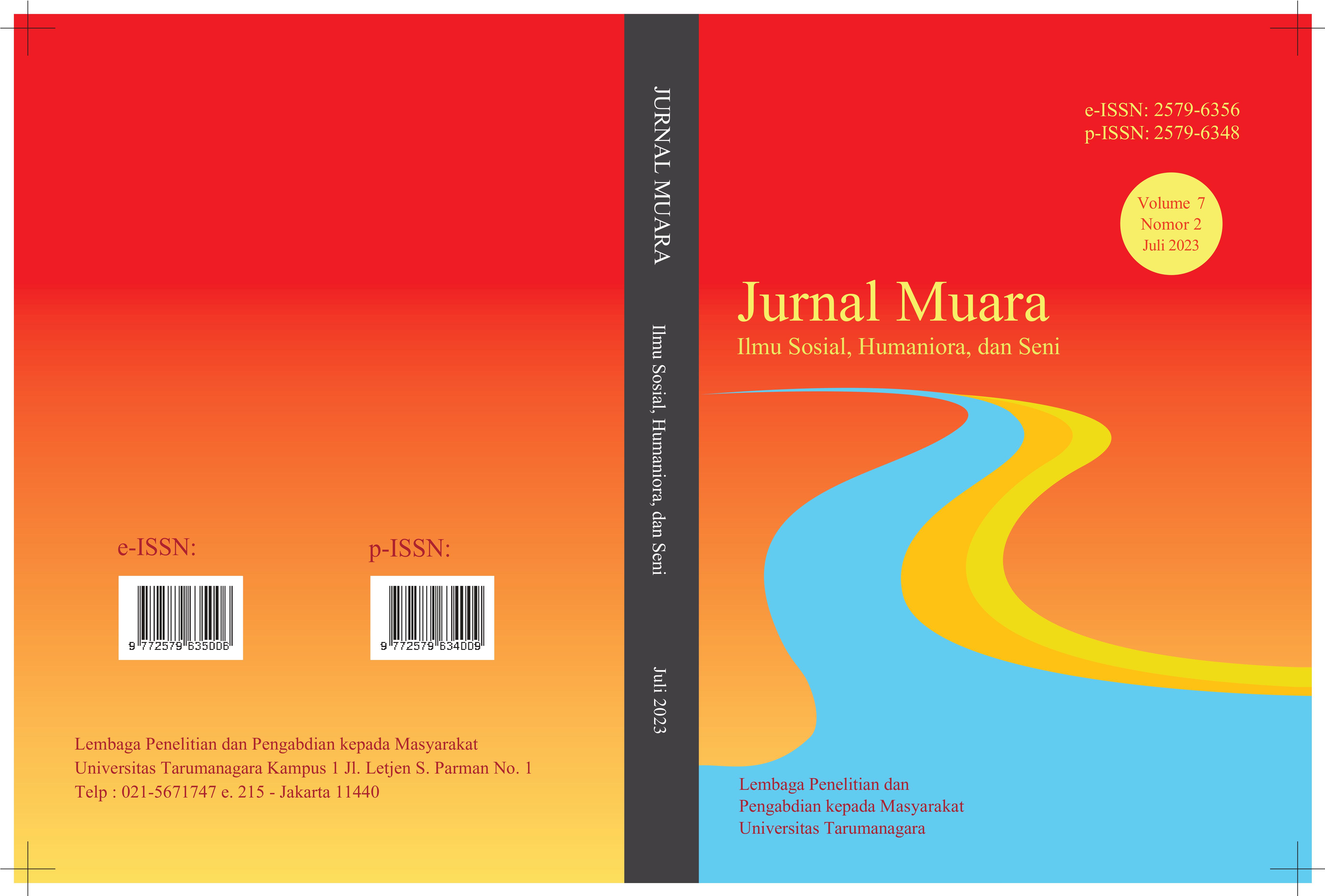HUBUNGAN ANTARA KONTROL DIRI DAN KONFORMITAS PADA REMAJA PEROKOK AKTIF
Main Article Content
Abstract
Seorang remaja mungkin saja melakukan perubahan perilaku agar merasa terhubung dengan kelompoknya. Penelitian ini bertujuan untuk menguji hubungan antara kontrol diri dan konformitas pada remaja yang merupakan perokok aktif. Penelitian ini melibatkan 390 orang responden (295 laki-laki dan 95 perempuan) dengan rentang usia 16 sampai 20 tahun. Penelitian ini menggunakan metode kuantitatif non-eksperimental dengan jenis penelitian korelasional, teknik analisis data yang digunakan pada penelitian ini adalah Spearman Correlation. Hasil penelitian ini menunjukkan terdapat hubungan negatif yang signifikan antara kontrol diri dan konformitas pada remaja perokok aktif, dengan kontrol diri yang tinggi dan konformitas yang rendah.
Kata Kunci: Kontrol Diri, Konformitas, Remaja Perokok
Article Details

This work is licensed under a Creative Commons Attribution-NonCommercial-ShareAlike 4.0 International License.
This work is licensed under a Jurnal Muara Ilmu Sosial, Humaniora, dan Seni Creative Commons Attribution-ShareAlike 4.0 International License.References
Ajzen, I., & Manstead, A. S. (2007). Changing health-related behaviours: An approach based on the theory of planned behaviour. In The Scope of Social Psychology (pp. 55-76). Psychology Press. https://people.umass.edu/aizen/pubs/ajzen_manstead.pdf
Berndt, T. J. (1979). Developmental changes in conformity to peers and parents. Developmental psychology, 15(6), 608-616. https://psycnet.apa.org/doi/10.1037/0012-1649.15.6.608
Cialdini, R. B., & Goldstein, N. J. (2004). Social influence: Compliance and conformity. Annual Review of Psychology, 55(1), 591-621. https://doi.org/10.1146/annurev.psych.55.090902.142015
Coskan, C. (2010). The effects of self-control and social influence on academic dishonesty: An experimental and correlational investigation (Master’s thesis, Middle East Technical University). https://open.metu.edu.tr/bitstream/handle/11511/20080/index.pdf
Costanzo, P. R., & Shaw, M. E. (1966). Conformity as a function of age level. Child development, 37(4), 967-975. https://doi.org/10.2307/1126618
Desideria, B. (2016, Mei 27). Mengkhawatirkan, jumlah perokok remaja terus bertambah. Liputan6.com. https://www.liputan6.com/health/read/2517437/mengkhawatirkan-jumlah-perokok-remaja-terus-bertambah#
DW. (2018, Mei 31). WHO: Rokok ‘bunuh’ 10 orang per menit. Liputan6.com. https://www.liputan6.com/global/read/3544429/who-rokok-bunuh-10-orang-per-menit
Fauzan, F., Firman, F., & Daharnis, D. (2018, April). Relationship between self-control and peer conformity with smoking behavior. In International Conferences on Educational, Social Sciences and Technology (pp. 233-239). Fakultas Ilmu Pendidikan UNP. https://journal.unnes.ac.id/nju/komunitas/article/view/3301
Finkel, E. J., & Campbell, W. K. (2001). Self-control and accommodation in close relationships: an interdependence analysis. Journal of Personality and Social Psychology, 81(2), 263-277.
Franken, A., Moffitt, T. E., Steglich, C. E., Dijkstra, J. K., Harakeh, Z., & Vollebergh, W. A. (2016). The role of self-control and early adolescents’ friendships in the development of externalizing behavior: The SNARE study. Journal of Youth and Adolescence, 45, 1800-1811.
Harahap, J. Y. (2017). Hubungan antara kontrol diri dengan ketergantungan internet di pustaka digital perpustakaan daerah Medan (Skripsi, Universitas Medan Area). https://repositori.uma.ac.id/handle/123456789/24131
Hayati, I. (2017, Mei 15). Menteri kesehatan: Sepertiga penduduk Indonesia perokok. Tempo. https://nasional.tempo.co/read/875384/menteri-kesehatan-sepertiga-penduduk-indonesia-perokok
Iscoe, I., Williams, M., & Harvey, J. (1963). Modification of children's judgments by a simulated group technique: A normative developmental study. Child Development, 34(4), 963-978. https://doi.org/10.2307/1126539
King, L. A. (2014). The science of psychology: An appreciative view (3rd ed.). McGraw-Hill.
Lestari, K. A., & Fauziah, N. (2017). Hubungan antara konformitas dengan motivasi belajar pada siswa di SMA Muhammadiyah Kudus. Jurnal Empati, 5(4), 717-720. https://doi.org/10.14710/empati.2016.15451
Malihah, E., Maftuh, B., & Amalia, R. (2014). Tawuran pelajar: Solidarity in the student group and its influence on brawl behaviour. Komunitas, 6(2), 212-221. https://doi.org/10.15294/komunitas.v6i2.3301
Mischel, W., Shoda, Y., & Peake, P. K. (1988). The nature of adolescent competencies predicted by preschool delay of gratification. Journal of Personality and Social Psychology, 54(4), 687-696.
Morgan, M., & Grube, J. W. (1989). Adolescent cigarette smoking: A developmental analysis of influences. British Journal of Developmental Psychology, 7(2), 179-189. https://doi.org/10.1111/j.2044-835X.1989.tb00798.x
Myers, D. G., & Twenge, J. M. (2017). Social psychology (12th ed.). McGraw-Hill.
Octarina, D. (2017). Peranan self esteem terhadap konformitas pengkonsumsian alkohol pada remaja (Skripsi, Universitas Tarumanagara).
Papalia, D. E., & Martorell, G. (2014). Experience human development (13th ed.). McGraww-Hill.
Raniseski, J. M., & Sigelman, C. K. (1992). Conformity, peer presure, and adolescent receptivity to treatment for substance abuse: A research note. Jurnal of. Drug Education, 22(3),185-194. https://doi.org/10.2190/RLXR-8UXC-X7WN-DVLF
Runtukahu, G. C., Sinolungan, J., & Opod, H. (2015). Hubungan kontrol diri dengan perilaku merokok kalangan remaja di SMKN 1 Bitung. eBiomedik, 3(1), 84-92. https://doi.org/10.35790/ebm.v3i1.6611
Santrock, J.W. (2003). Adolescence: Perkembangan remaja. Erlangga.
Schmeichel, B. J., & Zell, A. (2007). Trait self‐control predicts performance on behavioral tests of self‐control. Journal of Personality, 75(4), 743-756. https://doi.org/10.1111/j.1467-6494.2007.00455.x
Tangney, J. P., Baumeister, R. F., & Boone, A. L. (2004). High self-control predicts good adjustment, less pathology, better grades, and interpersonal success. Journal of Personality, 72(2), 272- 322.
Welch, M. R., Tittle, C. R., & Grasmick, H. G. (2006). Christian religiosity, self-control, and social conformity. Social Forces, 84(3), 1606-1623. https://doi.org/10.1353/sof.2006.0075


